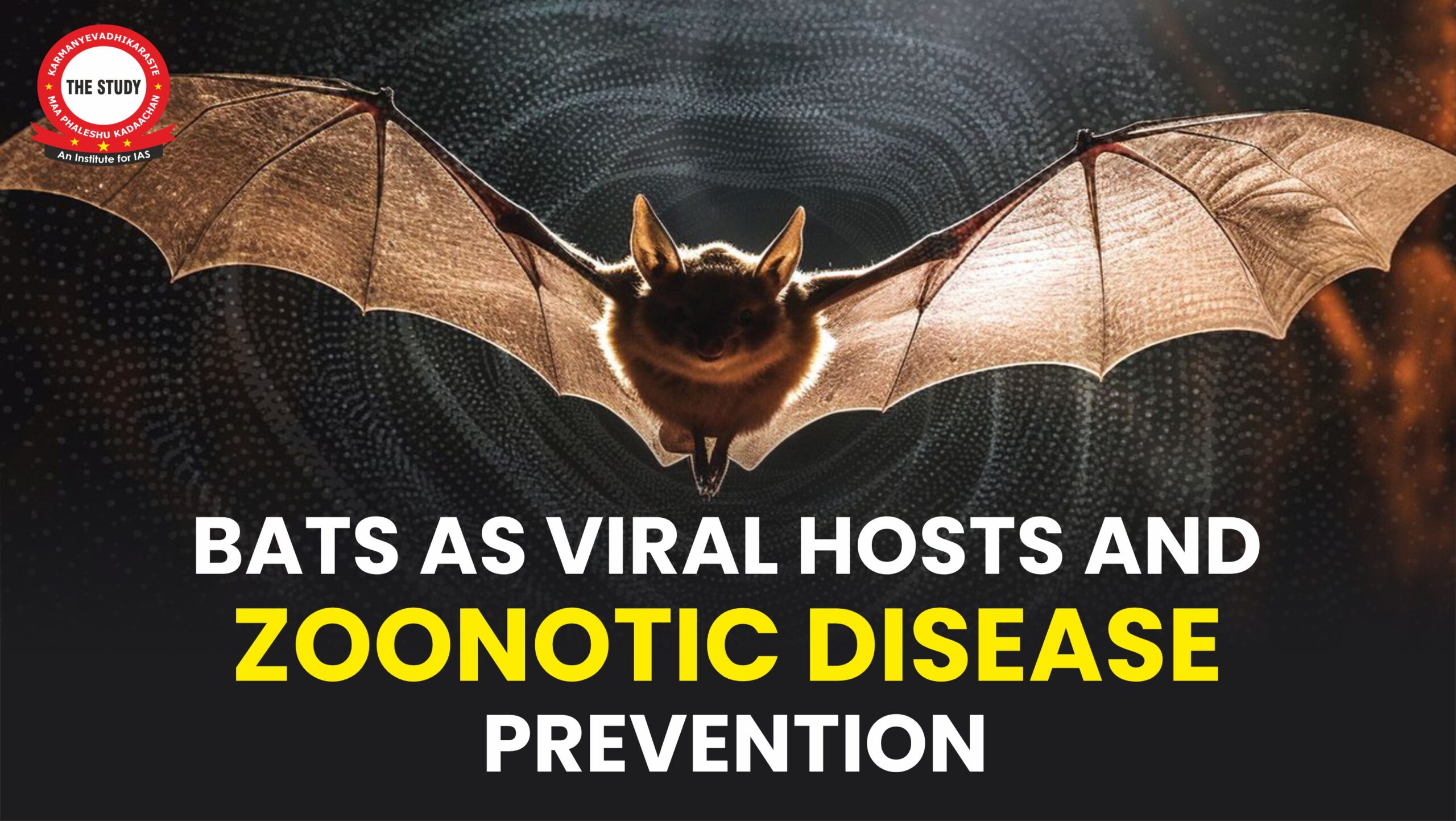Font size:
Print
Bats as Viral Hosts and Zoonotic Disease Prevention
Context:
Studies suggest bats are special viral reservoirs with the most virulent zoonotic viruses. The creatures harbour a vast array of viruses, some of which cause deadly diseases in humans.
Bats: Viable Viral Hosts:
- Bats harbour numerous viruses, some deadly to humans, yet rarely fall ill.
- Bats live in colonies, promoting easy virus transmission.
- Bats can survive high viral loads without showing clinical disease.
- Bats’ antiviral properties likely select for high growth rate viruses, which can be pathogenic in other hosts.
-
- High viral loads and anti-inflammatory phenotype allow bats to transmit viruses efficiently.
-

Adaptations for Flight, Viral Tolerance, and Coexistence:
- Flight requires significant metabolic effort, leading to unique adaptations in bats:
-
- Dampened recognition of cellular damage, Unique anti-inflammatory phenotype, Enhanced DNA damage repair pathways.
-
- These adaptations also help bats resist and tolerate viral infections.
- Bats immune adaptations for flight aid in viral tolerance and longevity.
- Bats balance viral tolerance with strong antiviral responses.
- Bats host thousands of viruses, including those causing human diseases like Nipah, Marburg, rabies, and SARS-like viruses.
Zoonotic diseases:
Spillover and Human Transmission:
- Bat-borne viruses are less likely to establish sustained human transmission due to phylogenetic distance.
- Viruses from hosts closer to humans, like primates, have higher potential for endemic establishment.
- Human activities, such as deforestation and climate change, increase spillover risks.
- Intermediate hosts (e.g., dogs, pigs, horses) often play a role before bat-borne viruses infect humans.
Importance of Conservation and Studying Bat-Borne Viruses:
- Understanding bat virus transmission aids in early intervention to prevent spillover, research on fruit bats in Madagascar provides insights into virus movement and bat immune responses.
- Discovering new henipaviruses helps develop preventive measures like multivalent vaccines.
- Bats face population decline due to white nose syndrome and climate change.
- Negative perceptions hinder bat conservation efforts.
- Bats are essential for ecosystems, including pollination and insect control.
- Studying bats provides insights for combating viruses, advancing human health, and understanding bat immune systems, cancer resistance, and longevity, offering valuable knowledge for human health.

|
Interesting Facts About Bats:
|





